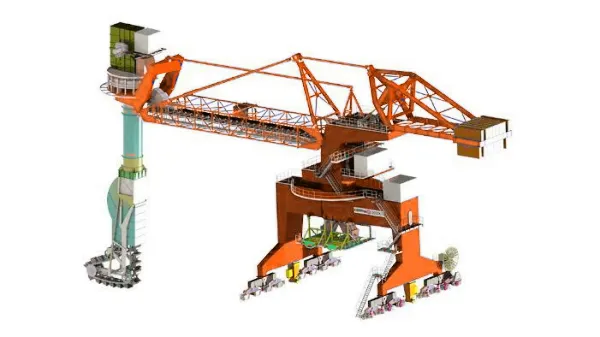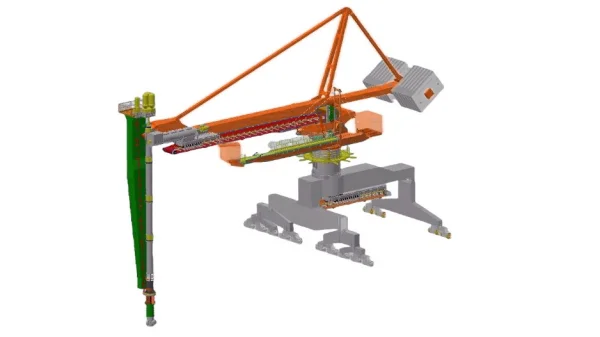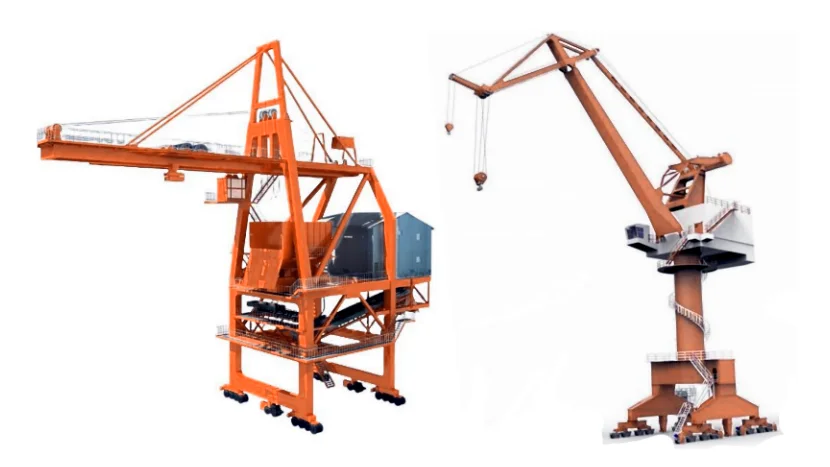Just let we know what you want, and we will get in touch with you as soon as possible!
Mobile Bulk Material Handling Experts
Continuous Ship Unloader for Bulk Materials Handling
A Continuous ship unloader (CSU) is advanced port machinery designed for the efficient, dust-free, and low-noise unloading of dry bulk materials from ships. Unlike intermittent grab-type unloaders, CSUs operate continuously, using mechanisms like screws, buckets, or chains to transfer cargo such as coal, grain, iron ore, biomass, cement, and oilseeds directly to shore-based conveyors or storage. They are ideal for high-volume ports, handling ships up to 150,000 DWT with throughput rates up to 3,000 tons per hour (t/h). CSUs can minimize environmental impact by enclosing the unloading process, reducing dust emissions and noise pollution.

Types of Continuous Ship Unloader
A CSU operates by scooping, digging, or drawing cargo from the ship's hold and conveying it ashore through enclosed mechanical or pneumatic systems. The most common mechanical CSU types include:
1. Bucket chain unloaders
A continuous chain of buckets lifts material from the hold and transfers it to a belt conveyor. They are ideal for medium-to-large capacities, gentle on materials during cleaning, with capacities up to 3,000 t/h.
2. Screw-type unloaders
A vertical or horizontal screw conveyor extracts cargo and transfers it through enclosed conveyors.They are suitable for sensitive materials like biomass or coal, with capacities up to 2,500 t/h.
3. Bucket wheel unloaders
A rotating bucket wheel digs into material and feeds it to conveyors.

How it Works
- Cargo pickup: The digging or intake system collects material from the hold.
- Vertical conveying: Lifts material out of the hold (via buckets, screws, or pneumatic air streams).
- Horizontal conveying: Transfers material to shore via enclosed conveyors.
- Trimming: Special devices or auxiliary equipment clear material from hold corners and bottom.
Main Features
- Continuous material flow: No stop-and-start cycle like grab cranes. Versatile for free-flowing and non-free-flowing bulks like coal, iron ore, grains, biomass, cement, and alumina.
- High capacity: Typically 500 to 3,000 t/h; handles ships from 35,000 to 150,000 DWT.
- Enclosed handling: Reduces dust and spillage, meeting strict environmental standards.
- Automated positioning: Automatic sink-in, traveling, slewing, luffing, and kick-in/out movements for efficient hatch coverage; digital controls and Blockchain for sustainability.
Advantages
- Faster unloading times for large vessels (Panamax, Capesize).
- Lower operating costs per ton due to continuous operation.
- Environmentally friendly: enclosed design controls dust (<50 mg/m³ in some designs).
- Gentle handling for sensitive materials like grain.
Limitations
- High initial investment (several million USD).
- Less flexible for mixed cargo compared to mobile grab cranes.
- Complex maintenance for mechanical parts.
- Ship compatibility : requires good alignment with ship holds.

Typical Applications
- Coal terminals
- Grain terminals
- Cement and clinker handling
- Ore and alumina ports
- Fertilizer terminals
Considerations When Choosing a CSU
- Capacity Needs: Match throughput to port volume and ship sizes.
- Material Type: Ensure compatibility with free-flowing or sticky cargoes.
- Environmental Compliance: Prioritize enclosed, low-emission models.
- Installation: Consider rail-mounted vs. stationary for port layout.
- Support: Opt for manufacturers offering global service and training.
If you'd like, I can prepare a comparison table of continuous ship unloaders vs. grab-type unloaders vs. pneumatic unloaders so you can clearly see which is better for specific cargoes, ship sizes, and port layouts. That would make the differences crystal clear.

 English
English



